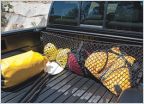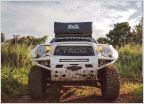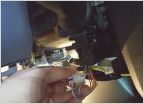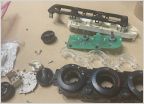-
Welcome to Tacoma World!
You are currently viewing as a guest! To get full-access, you need to register for a FREE account.
As a registered member, you’ll be able to:- Participate in all Tacoma discussion topics
- Communicate privately with other Tacoma owners from around the world
- Post your own photos in our Members Gallery
- Access all special features of the site
12-pin DTRL LED Flasher Modification (2012 Tacoma)
Discussion in '2nd Gen. Tacomas (2005-2015)' started by Sammy1Am, Oct 15, 2012.
Page 1 of 6
Page 1 of 6


 DIY Remote Start in 2015 Advice
DIY Remote Start in 2015 Advice Cargo net question (Amazon)
Cargo net question (Amazon) Startrooper 13 Tacoma Overlanding Build
Startrooper 13 Tacoma Overlanding Build Rubber Mudflaps
Rubber Mudflaps Need remote start install help
Need remote start install help Operation: hit ‘em with the blue lights
Operation: hit ‘em with the blue lights
